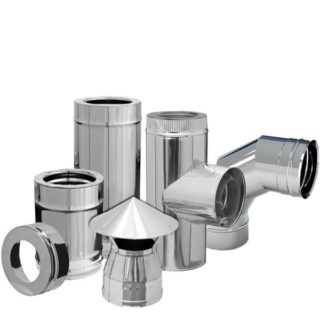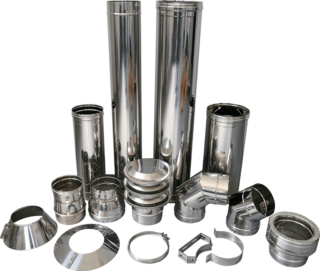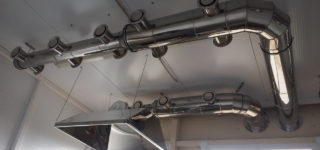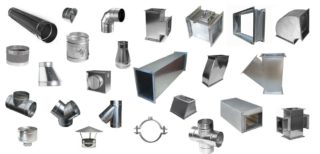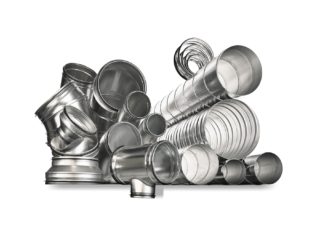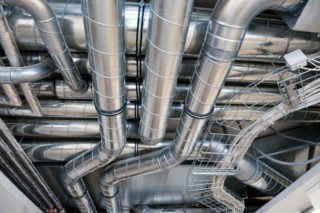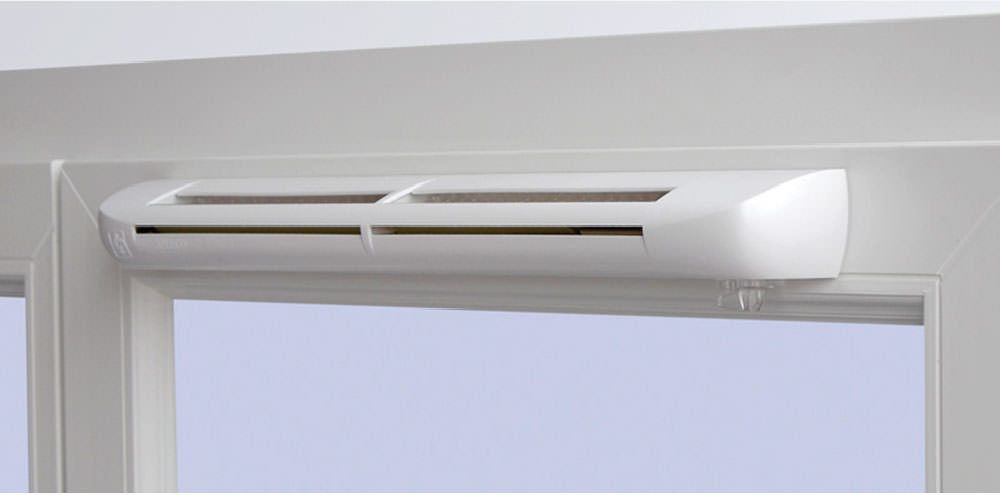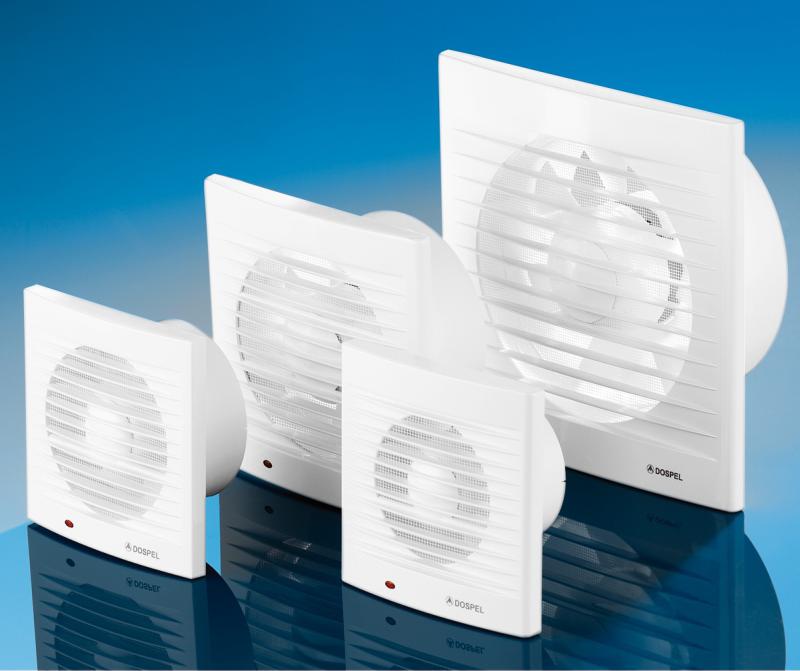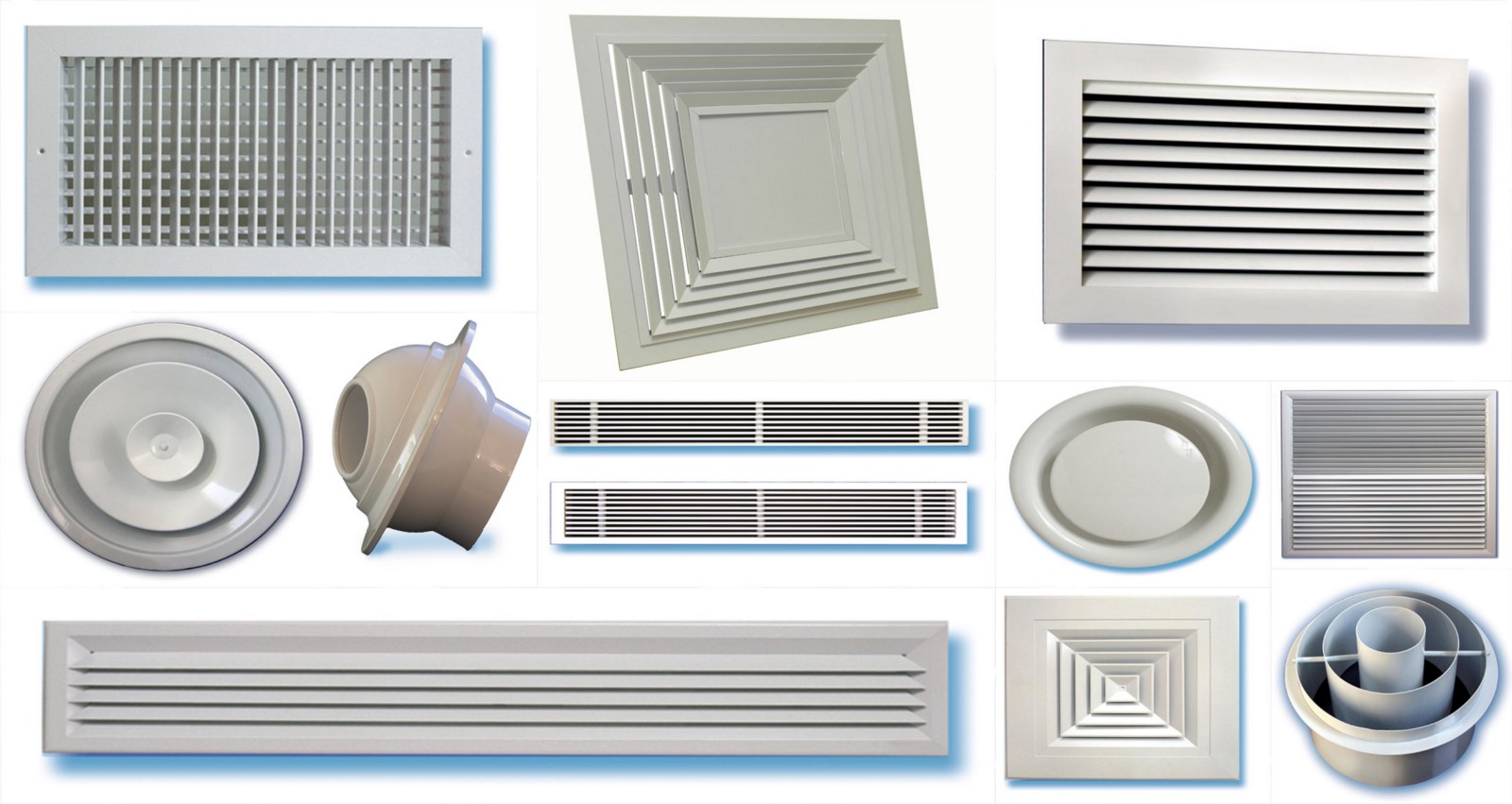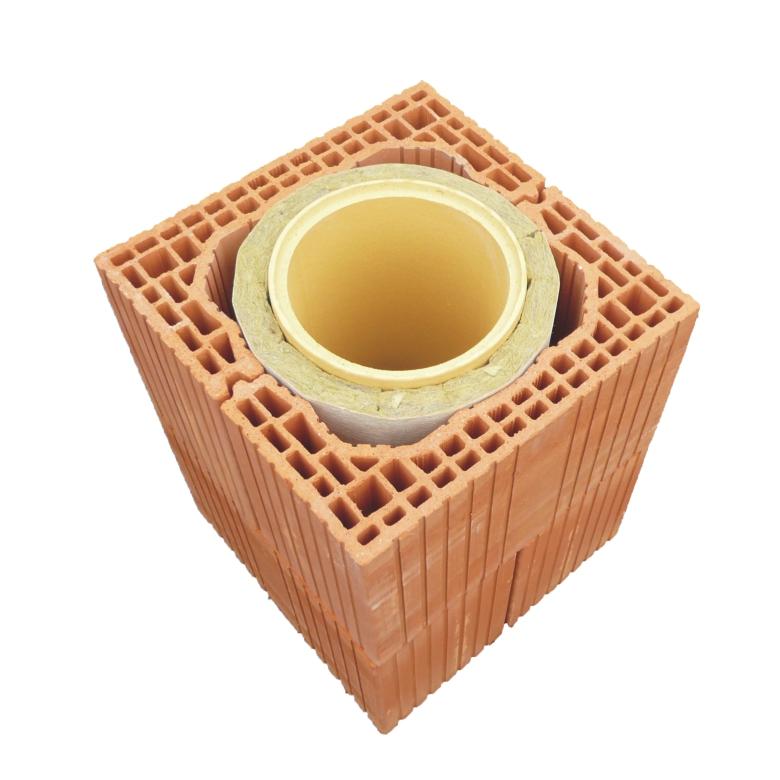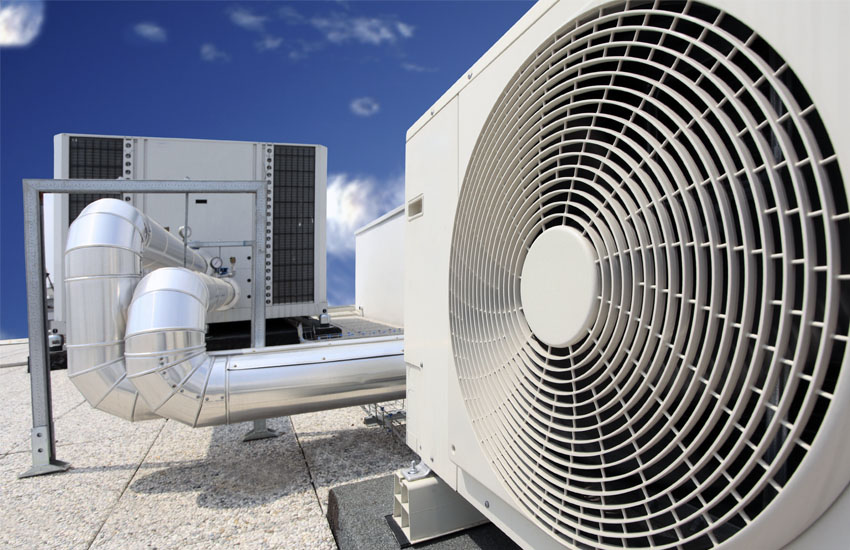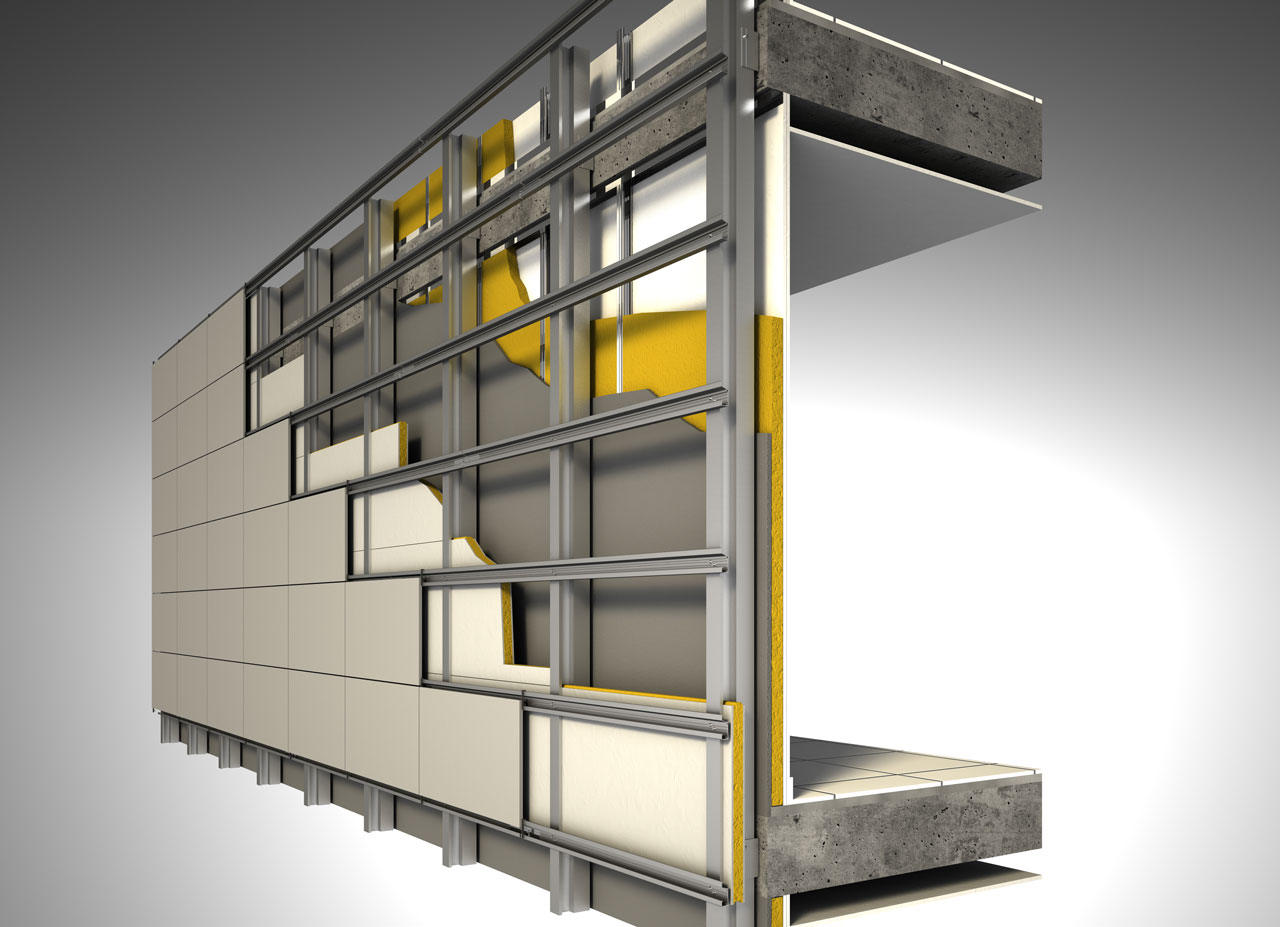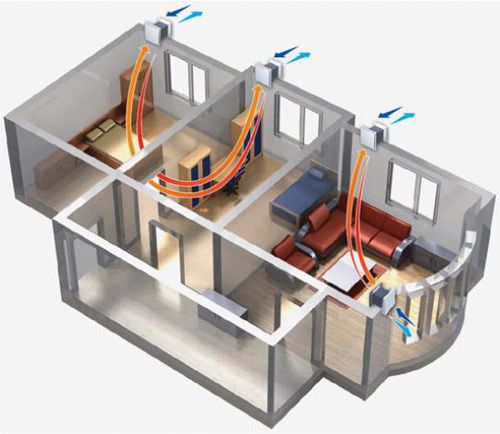The purpose of home improvement with ventilation systems is to ensure constant air exchange in all rooms. The use of special stainless steel air ducts is predetermined by their versatility and reliability. Due to the technical characteristics of these devices, it is possible to use them in all areas of industrial production, chemically aggressive environments, at sufficiently high temperature loads, as well as in domestic conditions.
- discharge of waste polluted or smoky air;
- intake of fresh clean air inside the room;
- cooling, heating or cleaning.
Such ventilation devices are recognized as the most durable and efficient. Pipes for ventilation in these systems are used from stainless steel. This gives them resistance to corrosion, the influence of aggressive chemical materials. Such products have a higher thermal resistance.
They are usually made with a round or rectangular section. If such pipes are additionally treated with mineral wool, then it is possible to ensure their fire resistance in order to be used in all areas with high exposure temperatures. Stainless steel devices remain intact even in humid or acid-base environments.
Technical characteristics of stainless steel air ducts
The characteristics of air exchange devices are usually laid down when designing a ventilation system, taking into account the ventilated area and its purpose. Moreover, the cross-section of the pipeline, as well as the length of its channel are calculated values.
Devices for ventilation of premises must comply with such characteristics as:
- complete tightness;
- quiet operation (permissible noise no more than 25-35 dB);
- air speed, direction;
- corrosion resistance;
- compactness, light weight;
- Fire safety.
Stainless steel is considered a complex alloyed alloy with increased corrosion resistance to aggressive environments, to various weather conditions. Its main alloying element is chromium, which significantly increases its corrosion resistance.
- cross-sectional area;
- rigidity;
- sectional shape.
The main indicator of the technical characteristics of this equipment is its resistance to corrosion, due to the quality of the metal used. Substances included in its composition are designated by generally accepted standard codes. The most common composition of stainless steel has the American Iron and Steel Institute standard, abbreviated AISI. Moreover, for the production of ventilation products of different types of cross-section (round, rectangular), various grades of stainless steel alloys are used, depending on the conditions, as well as the complexity of their operation.
Attention. It is very important that the device itself, as well as its fittings, have the same steel grade.The thickness of the metal of these products should be 0.5-2mm, and the chamfer is 1mm thicker. The walls of the pipes are usually thick-walled so that not only dust, dirty smoky air, but even the smallest particles of debris can move freely along them.
Scope of application
Moreover, round devices are more widely used in all industrial and residential buildings. They are distinguished by excellent tightness, good air flow rate.
Rectangular products are more often used for arranging ventilation of industrial, industrial premises with limited space.
The areas where stainless steel air ducts are used are very different. It:
- chemical, cellulose industrial enterprises;
- food, pharmaceutical industry;
- medicine, public catering;
- boiler rooms, laundries;
- household premises.
Classification
Ventilation pipes at exhaust devices differ from each other:
- by the shape of the section;
- by chemical composition;
- by the method of their manufacture.
By section shape
Round air ducts made of stainless steel are more rigid and therefore more durable. When manufactured, they usually consume 25% less metal than rectangular products. This has a positive effect on their lower cost.
Rectangular devices are more practical and have a number of advantages:
- they can be used on very large areas;
- it is convenient to carry out installation even under difficult conditions.
Important. Constructions with a circular cross-section are good for ventilation of rooms with a chemically aggressive environment, and products with a rectangular cross-section are more suitable for purifying the smoky air of boiler houses, heating points, rooms with high temperature conditions.
By the chemical composition of the material
The types of ventilation products depend on the quality, chemical composition of the stainless steel from which they are made. Distinguish:
- chromium-nickel;
- chromium, with the best anti-corrosion properties;
- chromium-manganese, nickel.
The most common markings for such steel:
- AISI 430, low carbon, is a type of ferritic steel, characterized by low cost, excellent corrosion resistance, strength, resistance to high temperatures.
- AISI 304 contains a moderate amount of carbon, which gives products significant heat resistance, hardness, the ability to use in conditions of high humidity, acid-base atmosphere, easily amenable to welding.
- AISI 316, contains molybdenum, especially corrosion resistant.
- AISI 321 contains a high content of nickel and chromium (up to 33%). It is resistant to any kind of corrosion, has increased ductility, strength, and is perfectly amenable to the pressure treatment process.
Air ducts are also used at high humidity, environments with acid-base contents, where heat resistance and corrosion resistance are required.
By production method
- Spiral welded stainless steel products are produced using special steel belts, coiled in a spiral. The resulting spiral is stretched in opposite directions, then its elements are welded together. Products of this type of steel lend themselves well to the creation, if necessary, of welded joints.
- Straight-seam products are made by means of steel sheets formed into one-piece pipes with a straight seam on special bending machines. All seams are then rolled well.
- Spiral-locking devices, when a steel tape is twisted in a spiral, at the ends of which a lock is formed in a special way, which is closed with a strong seam on a special machine.
- Corrugated ventilation systems are made of special foil with a thickness of 0.12-1mm. The strips of such foil are fastened with a locking method, and the seams are fixed with a special spring.
Advantages and disadvantages of stainless steel air ducts
First of all, we note the advantages of stainless steel used for these products, namely:
- the possibility of its use in chlorides, alkaline solutions;
- resistance to various temperature extremes;
- increased resistance to corrosion;
- ease of processing when welding, cutting, forming;
- strength, resistance to deformation;
- attractiveness, aesthetics of the surface.
Benefits of air ducts:
- rigidity, heat resistance;
- thermal stability (withstanding temperatures up to 900 ° C);
- wear resistance;
- high heat capacity, can be used for fireplaces, stoves, boiler rooms;
- moisture resistance, non-susceptibility to the formation of mold, mildew.
In addition, stainless steel ventilation pipes have a polished surface that does not retain soot, dust and grease. Stainless steel alloys can be easily welded, bent, used even in hard-to-reach places.
In addition to the listed advantages, air ducts also have some disadvantages:
- they are unstable to mechanical intensive actions;
- in case of poor-quality installation, such ventilation devices can emit noise, subtle sounds.
Installation rules
Installation of ventilation equipment is a rather laborious process. It is important to take into account not only the tasks of air exchange, but also the maintenance of the necessary humidity inside the premises, control of the purity of the incoming air.
Important. In the used exhaust ventilation systems, one hood is used to remove smoky or polluted air. And in the case of using supply and exhaust systems, two hoods are used (one for the supply of clean air, the other for the removal of contaminated air).
- it is imperative to ground the device to be installed in order to avoid the accumulation of static electricity during its operation;
- at the design stage, installation of such systems, it is necessary to take into account the property of aerodynamics, since the air in the stainless steel ventilation pipes moves in a spiral;
- flexible and semi-flexible products must be mounted at full extension;
- on basement and basement floors, in areas with contact with the ground, as well as in structures that pass through ceiling or floor ceilings, use the installation of rigid devices;
- if the air duct was damaged during installation, it must be replaced;
- if ventilation is required to be mounted at an angle, then given that with sharp turns of the pipes, the aerodynamic properties of them decrease, it is necessary to make the radius of such a turn in size at least two diameters of the mounted air duct.
Correct installation rules often depend on the used grade of stainless steel, the method of installation.
Installation methods
Installation of ventilation systems is performed using:
- flanges, using rivets, bolts;
- socket, with butt ends of pipes, tightly fixed from the outside;
- tires providing good tightness due to a special tightening locking element using rubber or foam rubber gaskets;
- electric welding, which ensures the best tightness of the joints using a special heat gun.
Advice. To prevent deformation of the product, its elements must be fixed with long brackets, and the ventilation pipes must be fixed using special clamps, which are tightened with an open-end wrench.
To reduce the noise level during operation of ventilation devices, they are equipped with silencers.
Conclusion
As you can see, the use of stainless steel air ducts has become quite widespread in many areas of our life. Not a single industrial, public service, catering or trade enterprise is complete without the installation of ventilation systems, air ducts for supplying clean air inside the premises and removing used polluted or smoky air.
They are equipped with:
- offices, clubs;
- restaurants, cafes, bars;
- apartments, cottages;
- industrial premises.
In this case, it is desirable to take into account a number of aspects:
- air ducts with a circular cross-section are usually made longitudinally welded;
- use round stainless steel devices more often to remove air from boiler rooms, to cleanse it from smoke, chemical fumes, gas;
- rectangular products are often used as gas ducts, as well as for smoke removal in chemical plants.

